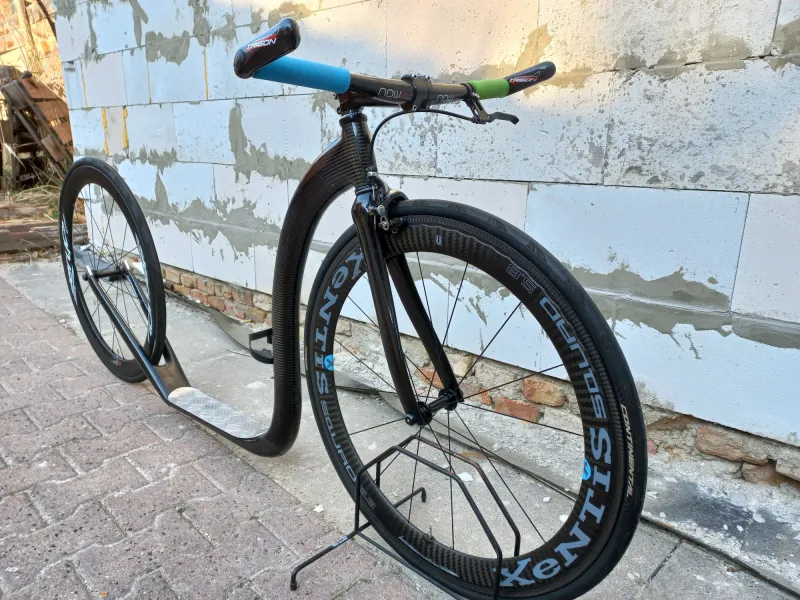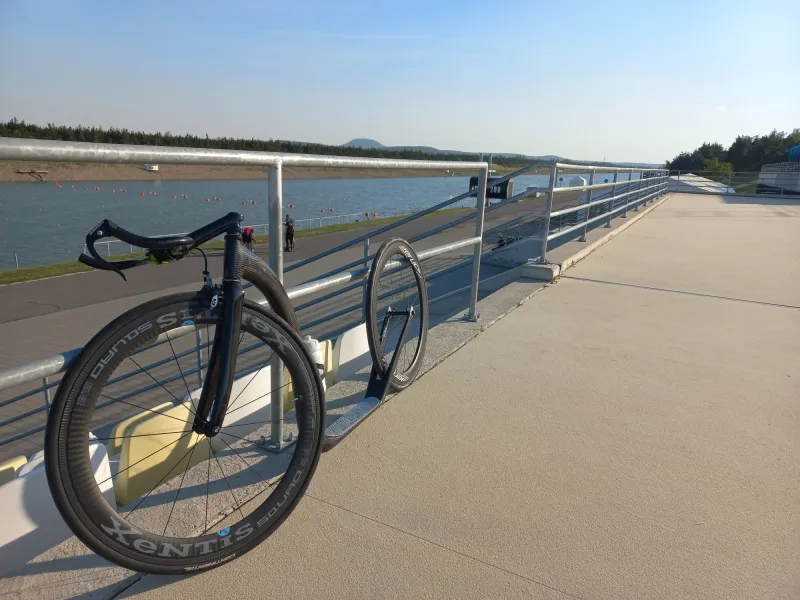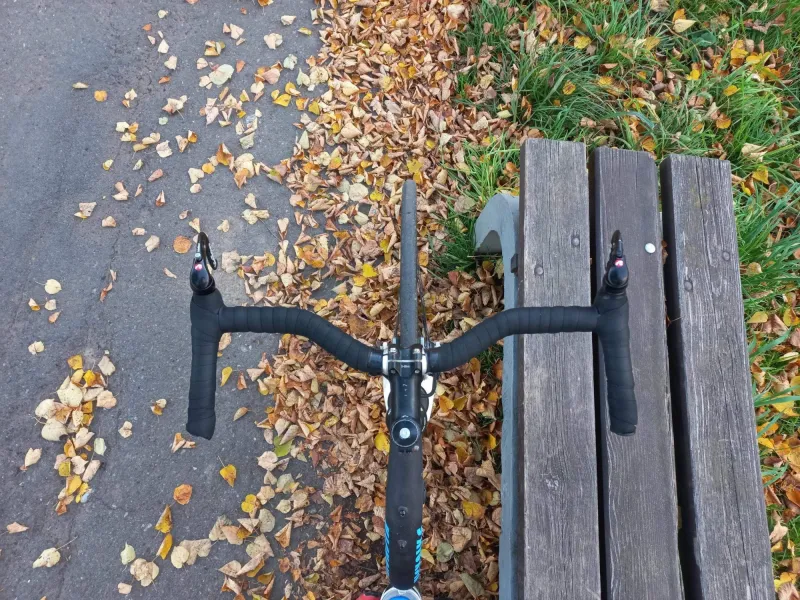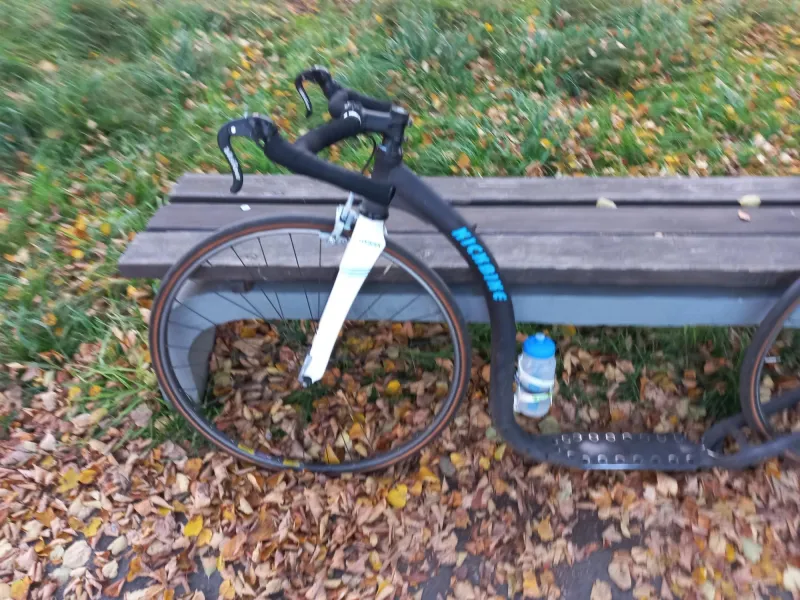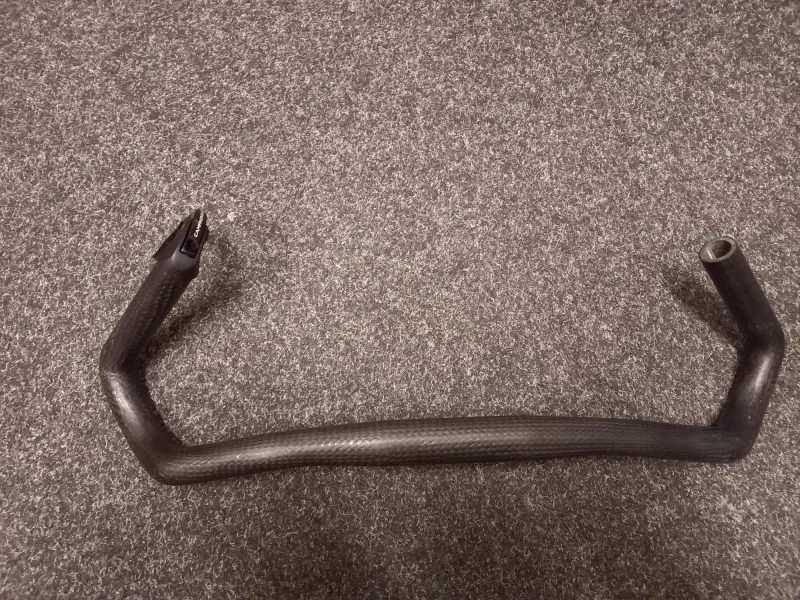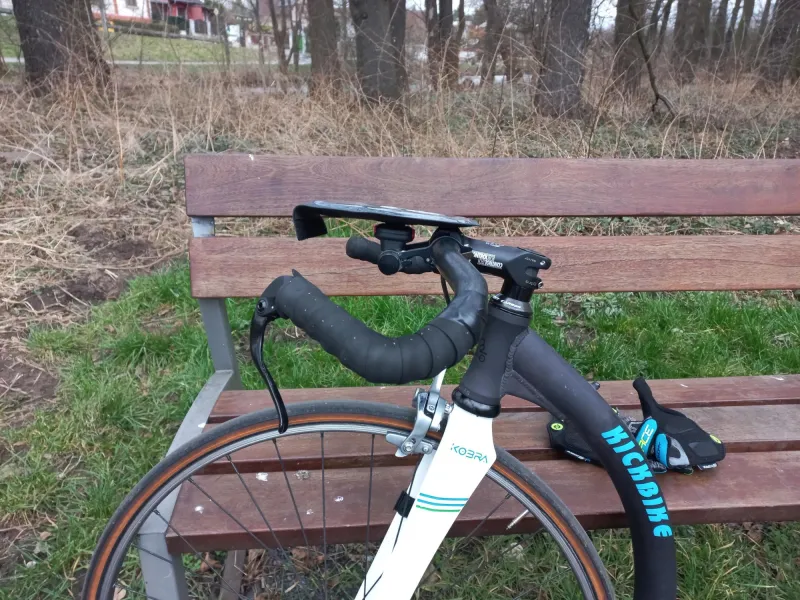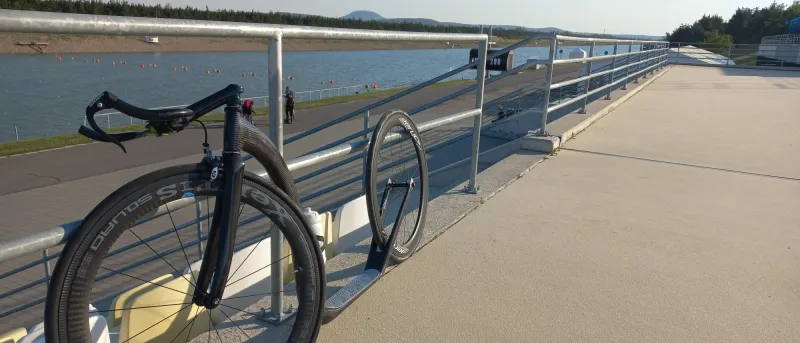
Practice gravel handlebars
Some time ago we published an article about handlebars - Gravel bars theory. After some time we have new knowledge, new experience and, new handlebars.
Yes, in my case gravel handlebars have given way to straight ones for racing use. And in one case, world wonder - in a flat time trial - the triathlon ones. However much the handlebars have been tinkered with, the sheer versatility of straight handlebars with horns has always been evident. In the run-up to the Best of the Season, the handlebar width, stem length and horn position were fine-tuned. One wouldn't believe the degree to which they are related. By using horns with a greater curve, narrower handlebars proved preferable. If the corners are more perpendicular, then wider again. Depends on how one's arms are bent.
The next handlebars to test, and which were missing in the first article, are the Kostka FBH Racer Ergo racing handlebars. They offer a lot of grip to look at, our testing showed one great grip - at the junction of the "horns" and the base of the handlebars. In this position, however, you don't have the brake levers handy again.
Well, since we don't sleep on our laurels, we started to work again. Something like scooter handlebars are missing here, although Piet Groeneveld has produced some pieces for his customers here and there. Because he rides a scooter and so do we, the resulting ideas and products are not much different.
We use bicycle parts throughout the scooter. The handlebars are no exception. It's always good to be inspired, but for a scooter sometimes you need to go about it differently. What do we take inspiration from for handlebars? Ergonomics. Scientifically developed, proven by years of use. Straight handlebars, swallow handlebars but also time trial handlebars have specific angles of curve (and not just one) and width. From narrow time trials to downhill swallows. From straight (yet curved) to gravel. And so we ride, bend, test and bend and ride again.
For footbike handlebars, we see a few key points - a lowered grip with a comfortable hold and brake lever for a nimble ride, and a raised love grip to relax the back, perhaps at the level of the straight handlebars. Carbon manufacturing also allows for challenging shapes, so compared to other materials it's relatively easy to get the right result.
After some time drawing and testing, we tried the first real prototype. Timing brake lever, possibility to mount an additional one, 31,8mm diameter for the stem. Piet makes them as a combo solution with a stem, but considering it's for a certain rider and a certain scooter, it's a pretty reasonable solution. The grip is comfortable, the handlebars are 25mm in diameter, which is more than the others which are 22.2mm. It's from a simple point of view - we don't mount the brake levers on the handlebars but in the handlebars, and the larger diameter is better for grip. The diameter can be further addressed with different thickness wraps.
And the test results? The main finding is that you can have any handlebars you want, but it's important to have them the right height. Here we come to the fact that you can use different handlebars for each race or route - more suitable. This is what their correct height has to do with - so time trial reins will be differently high than straight or risers reins.

